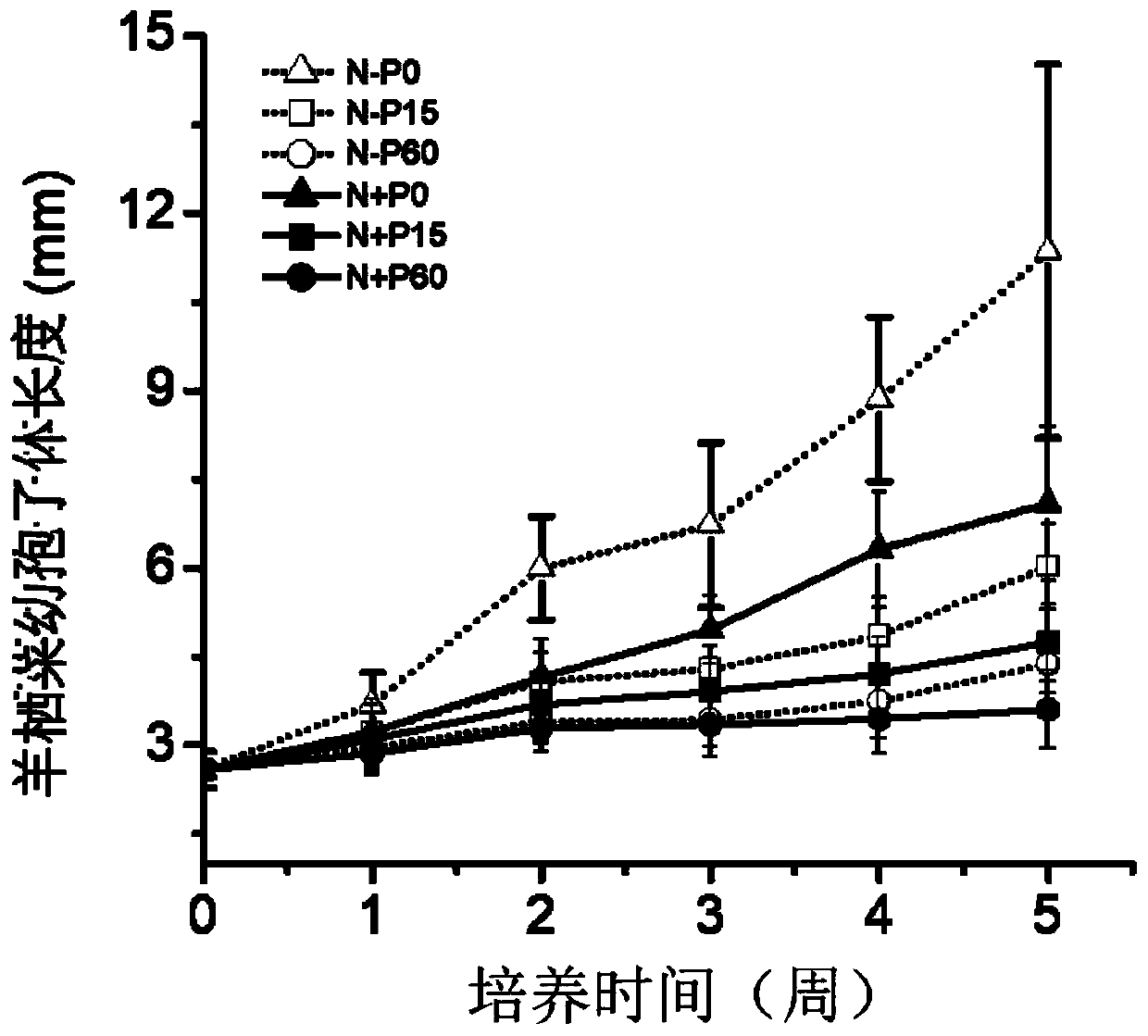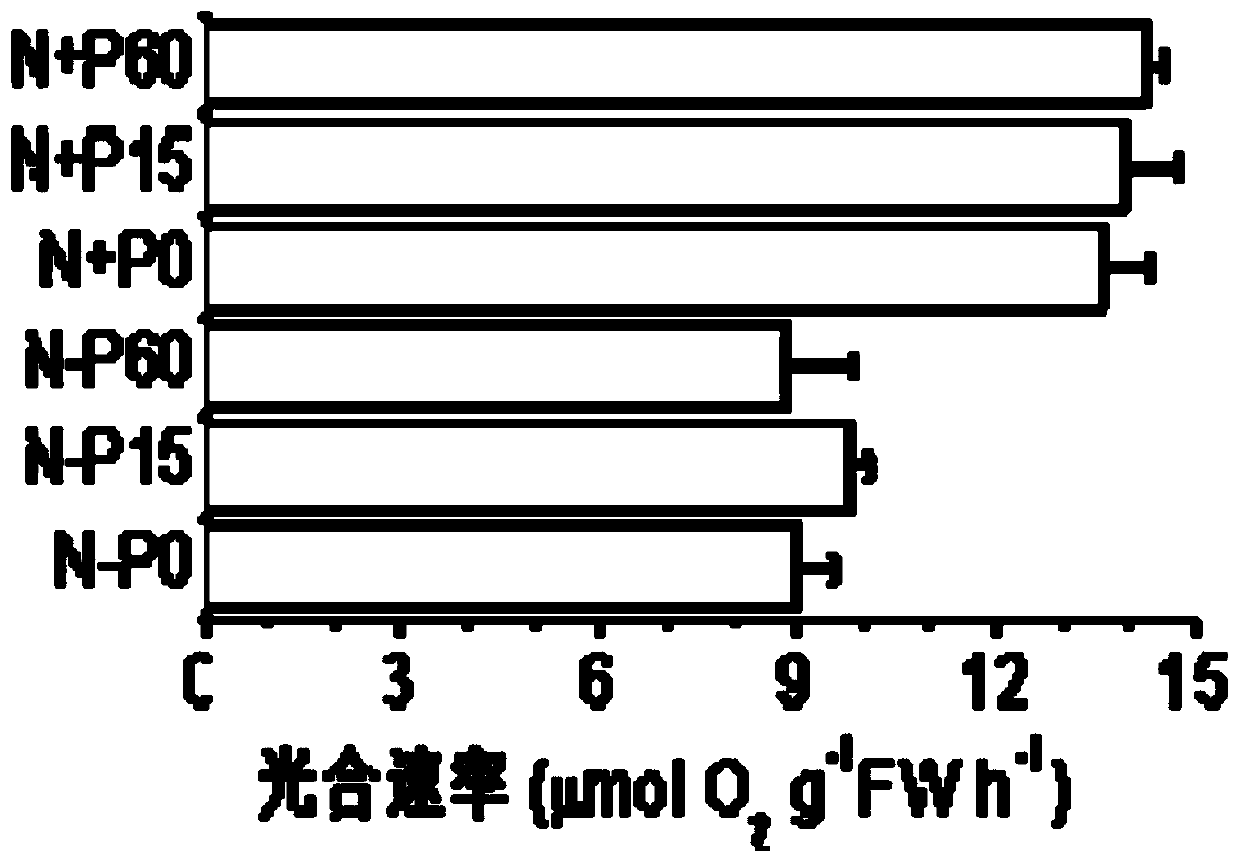Hizikia fusiforme juvenile sporophyte growth regulating method
A technology for young sporophytes and hijiki, which is applied in the field of regulation of the growth of young sporophytes of hijiri, can solve the problems of low seedling success rate and seedling contribution less than 10%, and achieves the improvement of photosynthetic rate and seedling success rate. , the effect of enhancing the ability
- Summary
- Abstract
- Description
- Claims
- Application Information
AI Technical Summary
Problems solved by technology
Method used
Image
Examples
Embodiment 1
[0040](1) 10 pieces of square cloth strips with uniform size, healthy growth and evenly distributed Sargassum juvenile sporophytes (each piece of cloth strip size is 20mm×20mm, with about 20 young sporophytes attached, each The initial length of strain young sporophyte is 2.5-3.5mm), puts into two 5000mL Erlenmeyer flasks (each Erlenmeyer flask is put into 10 cloth strips) of adding 5L natural seawater, in described natural seawater (contrast seawater) NO 3 - The concentration is 10 μmol L -1 , PO 4 3- The concentration is 0.5μmol L -1 , On this basis, add inorganic nitrogen salts to the two Erlenmeyer flasks, and do not add phosphorus salts. The amount of inorganic nitrogen salt added in the two Erlenmeyer flasks was 0 micromole and 200 micromole per liter of seawater, marked as N-P0 and N+P0 respectively, and the two groups were compared with each other.
[0041] (2) pump air into the Erlenmeyer flask for cultivating hijiki young sporophytes from the outside by an air ...
Embodiment 2
[0046] (1) 10 pieces of square cloth strips with uniform size, healthy growth and evenly distributed Sargassum juvenile sporophytes (each piece of cloth strip size is 20mm×20mm, with about 20 young sporophytes attached, each The initial length of strain young sporophyte is 2.5-3.5mm), puts into two 5000mL Erlenmeyer flasks (each Erlenmeyer flask is put into 10 cloth strips) of adding 5L natural seawater, in described natural seawater (contrast seawater) NO 3 - The concentration is 20μmol L -1 , PO 4 3- The concentration is 1 μmol L -1 , on this basis, add inorganic nitrogen salt and inorganic phosphorus salt to two Erlenmeyer flasks respectively. The amount of inorganic nitrogen salt added to the two Erlenmeyer flasks is 0 and 200 micromoles per liter of seawater, respectively, and the amount of inorganic phosphorus salt added to the two Erlenmeyer flasks is 15 micromoles per liter of seawater, respectively marked as N-P15 and N+P15 , the two groups are compared with eac...
Embodiment 3
[0052] (1) 10 pieces of square cloth strips with uniform size, healthy growth, and evenly distributed Sargassum juvenile sporophytes (each cloth strip size is 20mm×20mm, with about 20 young sporophytes attached, each The initial length of strain young sporophyte is 2.5-3.5mm), puts into two 5000mL Erlenmeyer flasks (each Erlenmeyer flask is put into 10 cloth strips) of adding 5L natural seawater, in described natural seawater (contrast seawater) NO 3 - The concentration is 16μmol·L -1 , PO 4 3- The concentration is 0.8μmol·L -1 , on this basis, add inorganic nitrogen salt and inorganic phosphorus salt to two Erlenmeyer flasks. The amount of inorganic nitrogen salt added to the two Erlenmeyer flasks is 0 and 200 micromoles per liter of seawater, respectively, and the amount of inorganic phosphorus salt added to the two Erlenmeyer flasks is 60 micromoles per liter of seawater, respectively marked as N-P60 and N+P60 , the two groups are compared with each other.
[0053] (...
PUM
| Property | Measurement | Unit |
|---|---|---|
| Length | aaaaa | aaaaa |
Abstract
Description
Claims
Application Information
 Login to View More
Login to View More - R&D
- Intellectual Property
- Life Sciences
- Materials
- Tech Scout
- Unparalleled Data Quality
- Higher Quality Content
- 60% Fewer Hallucinations
Browse by: Latest US Patents, China's latest patents, Technical Efficacy Thesaurus, Application Domain, Technology Topic, Popular Technical Reports.
© 2025 PatSnap. All rights reserved.Legal|Privacy policy|Modern Slavery Act Transparency Statement|Sitemap|About US| Contact US: help@patsnap.com



